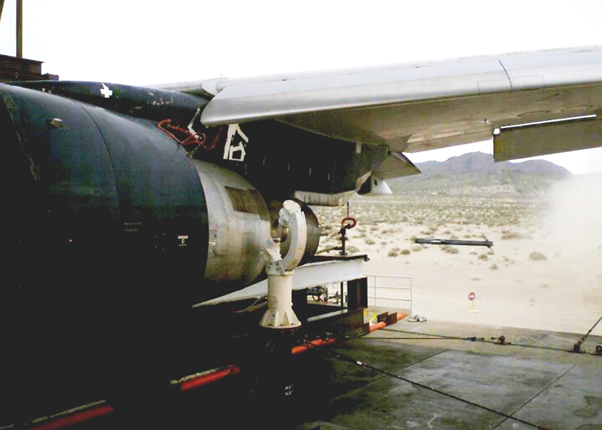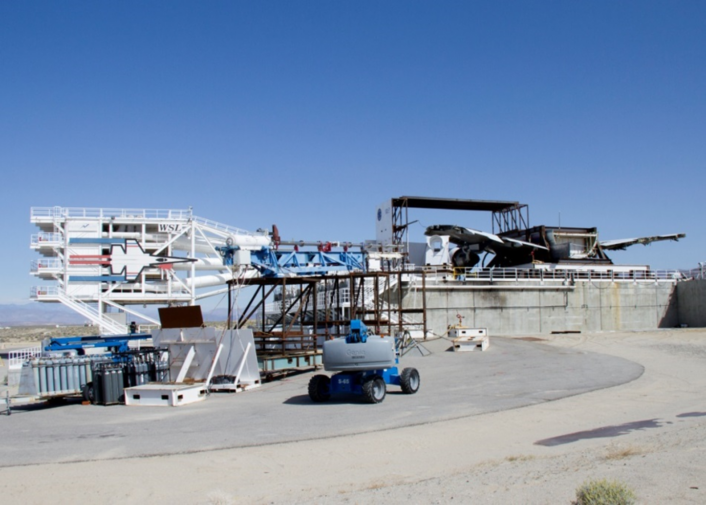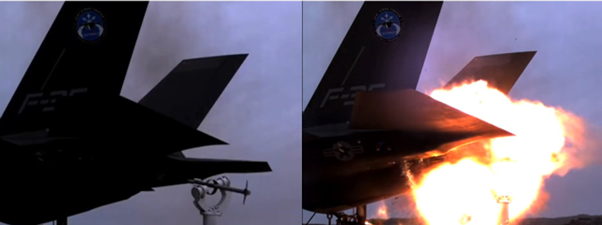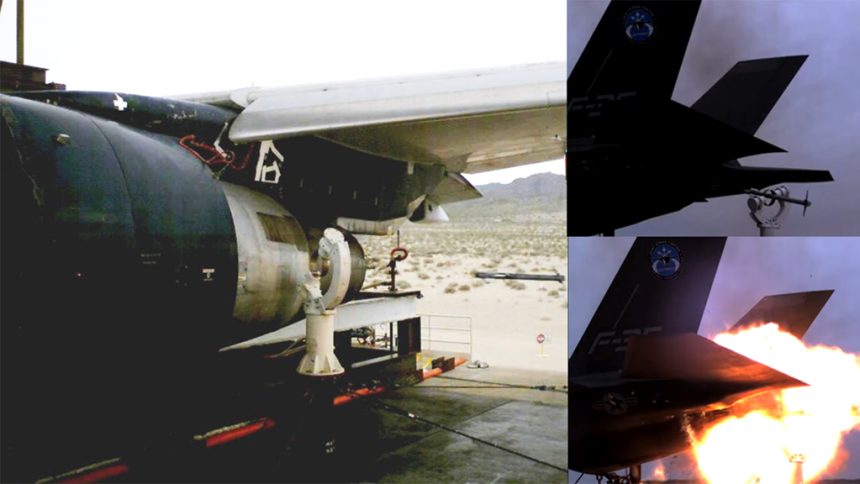Military platforms need to undergo Realistic Survivability Testing.
Live Fire Test & Evaluation (LFT&E) is part of an experimental testing procedure for military procurement of systems and munitions, specifically of which addresses the United States Code Title 10, Section 2366; “Major systems and munitions programs: survivability testing and lethality testing required before full-scale production”. This is something that covers both vehicles and munitions as well.
Thus, LFT&E is split in two, where covered systems (such as vehicles, weapon platforms, and conventional weapon systems that are designed to provide some degree of protection to users in combat) are subject to Realistic Survivability Testing. This tests for “vulnerability of the system in combat by firing munitions likely to be encountered in combat (or munitions with a capability similar to such munitions) at the system configured for combat, with the primary emphasis on testing vulnerability with respect to potential user casualties and taking into equal consideration the susceptibility to attack and combat performance of the system.”
On the other hand, missile programs or major munitions programs (a program that more than 1,000,000 rounds are planned to be acquired) undergo Realistic Lethality Testing. These munitions are tested for “lethality by firing the munition or missile concerned at appropriate targets configured for combat”.
Each platform that undergoes LFT&E will deliver two reports to US Congress before Full Rate Production Decision is met. The Live Fire Test & Evaluation report and Beyond Low Rate Initial Production Report is issued by the Director of Operational Test & Evaluation and sent directly to US Congress, some of which are made public after approval by the US House of Representatives Committee on Armed Services. The scope of testing can vary greatly depending on different parameters such as Live Fire Test Types (Over Match Testing, Testing to Failure, Requirements Verification Testing, System Characterization Testing, Component vs System Testing, Statistical Testing, and Testing to Verify Modes). In general, LFT&E is meant to provide a general understanding of a platform’s survivability to certain adversary weapons, but the test itself may only involve one particular calibre of munition fired from a specific angle due to the destructive nature of the test.
To summarise, most aircraft platforms need to go through Realistic Survivability Testing before entering service in the US armed forces. In this article we will focus on the former, diving deeper into recent aircraft procurements that have made their LFT&E reports publicly available. (A comprehensive definition and outline of the LFT&E process can be found here published by the US DOD Defence Acquisition University).
Brief history on Joint Live Fire testing (JLF-Air)
Before LFT&E became a widely adapted process, live fire weapons testing existed as far back as the early days of WWII. The first instances of such testing were by a demonstration where M2 light tanks failed to withstand .50 cal AP machine gun rounds. The most notable instance would be the GAU-8 A-10 Thunderbolt II cannon lethality tests. In terms of Realistic Survivability Testing, the need for such a program only became apparent in the early 1970s due to the Vietnam War. Due to this the Test and Evaluation of Aircraft Survivability (TEAS) program was born. The TEAS program would eventually test aircraft survivability of F-4 Phantoms, A-7 Corsairs and AH-1 Cobras. Focus later shifted to computational calculation until the 1980s when physical testing was reintroduced for the V-22 and F/A-18 program. Nowadays, the legacy of live fire testing continues with the LFT&E requirement. Along with LFT&E, the Joint Live Fire – Aircraft Systems (JLF-Air) program is utilised to identify vulnerable areas in aircraft platforms that are already in service. Both programs are run by a joint team of US Army Aviation & Missile Command, USAF Aeronautical Systems Center, and US Navy Naval Air Systems Command. The JLF-Air program has tested various existing platform’s survivability to increased modern combat threats such as F/A-18C fuel systems, CH-53E tail rotor systems and MQ-1 wing structures. Meanwhile LFT&E evaluated new aircrafts or particular variants before they entered service. Recently, KC-46 and F-35 airframes were put to test against missile threats as well as the new C-5M and CH-53K variants in the past.
LFT&E testing at Weapons Survivability Laboratory, China Lake
The MANPAD impact studies have been conducted at Naval Weapons Station (NAWS) China Lake, California by the Weapons Survivability Laboratory (WSL) under the Naval Air Warfare Center Weapons Division (NAWCWD). The laboratory prises its contribution to the LFT&E program boasting contributions to A-12, P-7, F/A-18E/F, V-22, AH-1Z, UH-1Y, and MH-60R/S. There seems to be various test stands to accommodate a wide range of fixed wing and rotary aircraft. The Super High Velocity Airflow System (Super HIVAS) is an open cycle nine-fan array that simulates inflight airflow conditions over fixed wing aircraft that provides 500+ knots of wind over a 3.53m2 cross sectional area. For rotary aircraft testing, the Helicopter Hover Fixture provides an elevated platform for simulated attacks from the underside of a helicopter. For simulated threats, an airgun known as the Missile Engagement Threat Simulator (METS) is used to launch a projectile. To simulate MANPAD impacts, the METS gun is loaded with a custom missile developed in-house to simulate the highest threat scenario possible.
KC-46 MANPAD test

On April 7, 2015, a test was commissioned for the LFT&E of the KC-46 tanker aircraft. At the request of the KC-46 program office, WSL developed a missile with custom designed warhead to represent the highest threat scenario the aircraft was expected to meet. The above image was captured by a high-speed camera running at 100,000 frames per second. Note the golden ring on the white beam that serves as the aiming point of the missile. MANPADS or man-portable air-defence systems are mostly IR homing missiles that lock on to an aircraft’s largest heat signature, the engine exhaust. Although the full footage is yet to be discovered, the NAWCWD public affairs team reported a “very successful test” had been conducted.

F-35 Full Up System Level Testing
The F-35 was also tested for threats from various aspects in a similar setup. Between October 2010 and September 2011, JSF test article AA-1 was subjected to 25 ballistic tests. 16 of these 25 tests were conducted using both the Super HIVAS and METS gun with the aircraft’s engine running to simulate the flight conditions of a high-speed chase. The various array of tests included surface to air warhead fragments, AP projectiles, HE projectiles, and a MANPAD.
All three F-35 variants were utilised to a certain degree where the CTOL variant AA-1 was used for Full-Up System Level testing. The carrier variant F-35C (CG-1) was used as a Full Scale Structural Test Article as AA-1 was structurally non-representative of the final production variant and only carried the final system architecture. F-35B housing the Lift Fan meant that BG-1’s propulsion system had to undergo ballistic testing separately. As a result, only the F-35A AA-1 has test footage of a direct impact available. Among many different criteria, effects of dry bay fires on flight critical equipment were evaluated during this testing as well as simulated pilot-in-the-loop post damage flight characteristics via a remote test control stand.

With a similar setup as the KC-46 experiment, a small aligning ring can be seen where the missile goes through after being shot by the METS airgun. According to WSL, the live fire tests wasn’t limited to rear impact, and reports suggest head-on tests were also conducted. In short, the long testing phase proved the robust nature of the F-35’s flight critical systems and the On Board Inert Gas Generating System (OBIGGS) playing a key role in fire containment.
Other aircraft with published LFT&E testing results
Most recently, in 2018 the CH-53K was subjected to live fire LFT&E before Initial Operational Capability (IOC) was declared for the new variant in April 2022. Due to the USMC’s program budget, the testing was split into two phases. The main Phase-I testing conducted between 2013 – 2018 focused on completing the minimum Operational Requirements Document and Air Vehicle Specification, satisfying LFT&E goals such as engines and rotors against live fire. The secondary Phase-II between 2019 – 2021 aimed to test more advanced threats such as tail assembly controls and hydraulics against attacks.
Apart from this, it is known that the C-5M had to go through LFT&E for its new wing to assess damage in the leading-edge dry bays for fire hazards. Unlike more recent cases, a pre-existing wing section from a retired C-5 was used as no extra airframes were planned to be produced for the upgrade in 2004.
While destructive testing of such aircraft may be an exciting rarity, it should be understood that years of preparation goes into simulation and calculation of such results before it is finally validated. Other than being part of the arduous US military procurement process, LFT&E also provides users an added sense of relief through a certified degree of safety.









